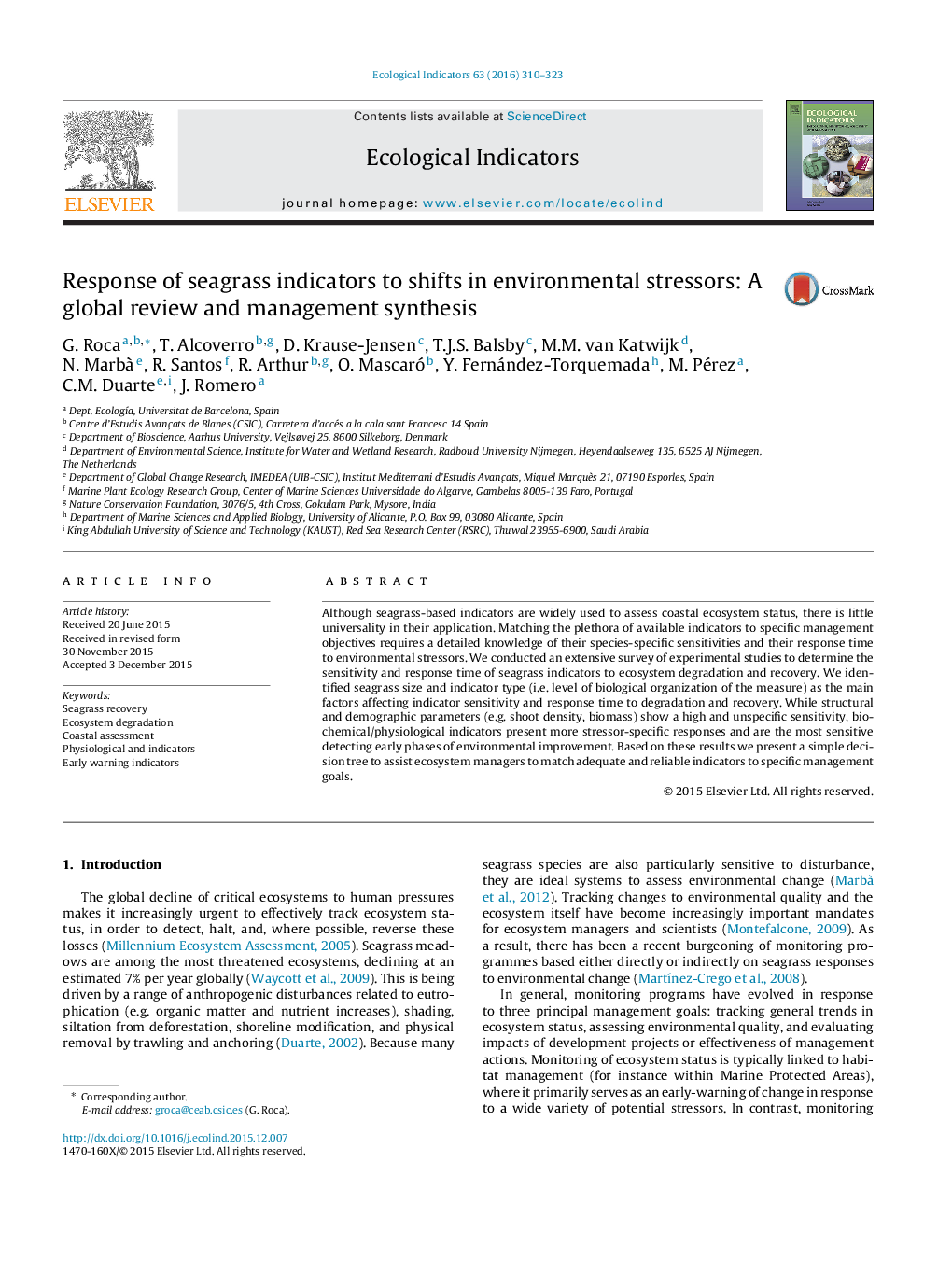| Article ID | Journal | Published Year | Pages | File Type |
|---|---|---|---|---|
| 6293880 | Ecological Indicators | 2016 | 14 Pages |
Abstract
Although seagrass-based indicators are widely used to assess coastal ecosystem status, there is little universality in their application. Matching the plethora of available indicators to specific management objectives requires a detailed knowledge of their species-specific sensitivities and their response time to environmental stressors. We conducted an extensive survey of experimental studies to determine the sensitivity and response time of seagrass indicators to ecosystem degradation and recovery. We identified seagrass size and indicator type (i.e. level of biological organization of the measure) as the main factors affecting indicator sensitivity and response time to degradation and recovery. While structural and demographic parameters (e.g. shoot density, biomass) show a high and unspecific sensitivity, biochemical/physiological indicators present more stressor-specific responses and are the most sensitive detecting early phases of environmental improvement. Based on these results we present a simple decision tree to assist ecosystem managers to match adequate and reliable indicators to specific management goals.
Related Topics
Life Sciences
Agricultural and Biological Sciences
Ecology, Evolution, Behavior and Systematics
Authors
G. Roca, T. Alcoverro, D. Krause-Jensen, T.J.S. Balsby, M.M. van Katwijk, N. Marbà , R. Santos, R. Arthur, O. Mascaró, Y. Fernández-Torquemada, M. Pérez, C.M. Duarte, J. Romero,
